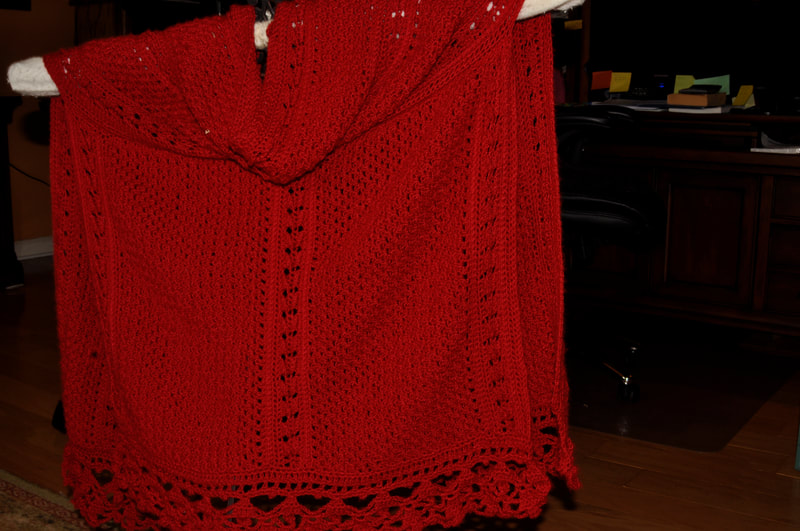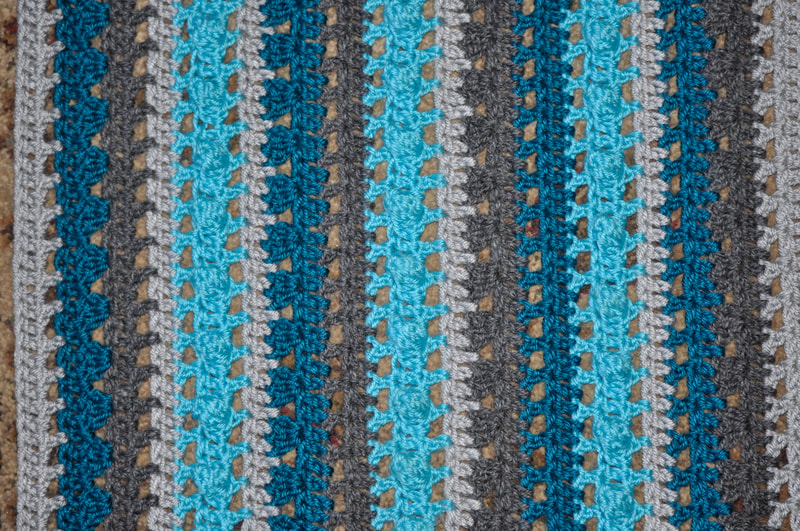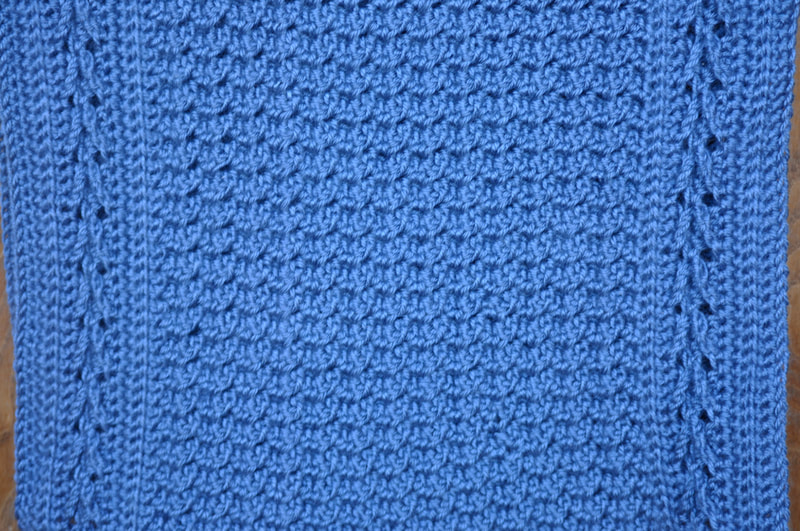The Art of Crochet
While there are many types of yarn and thread work that have existed in the world, knitting, weaving, and many historical types of knotting fabrics are well known. However, the art of crochet is unique. A crochet artisan produces lightweight fabric with open weaves using a combination of hundreds of possible techniques; crocheting has always been a decorative art. No one knows exactly when crocheting was developed and a case has been made that, as early as 1500 BCE, crocheting had been developed in the Middle East, South America, or even India or China. While a number of textiles have survived that are knitted or nalebined (another single needle method of making fabric), the lightweight fabrics that an artist creates with a crochet hook seldom survive the centuries.
The earliest known use of the word crochet (a French word meaning a hook) is in the late 18th century, referring to French nuns making fine lace for church altar cloths. By 1819, patterns appear in a number of magazines and crocheted “Irish Lace” became both a luxury item for the wealthy and a way for poor Irish housewives and Scotch crofters to earn money to support their families. This type of production was easy for the very poor women to establish as little more than thread, yarn, and a single hook was necessary to produce a vast array of lace. The hooks were initially made of wood or bone and the artist’s husband or father could make the hook to the women’s specifications.
Irish crocheted lace from the early 19th century
In the Victorian Era in England, fine lace graced women bodices, lace tablecloths were the height of home fashion, and brightly colored crocheted scarves in ever increasing complicated patterns graced the wealthy. These item were handmade and the profits from sales provided many families with the food they needed to survive the famines of the 19th century. Due to the Irish potato famine and the clearance of the Highland Scot crofters (a farmer owning 8-10 acres, whose livelihood depended on production of skilled work to support the family), many practitioners of these art forms were transported to the Americas, bringing their traditions with them.
In the early 20th century, mass produced machine made products, new textiles, and the movement of women into the textile factories slowed this art form. The poor working women in the U. S. and Europe, who had been the driving force in the crochet world, were now working 12 hours a day, six days a week for starvation wages in dimly lit factories; there was no time for any art, only survival counted. During WWII, the demand for women to work in the defense industries and lack of materials almost doomed many art forms, including crocheting. It was not until the 1970’s that working women (and some men) found that crocheting provided the stress relief and the unrivaled creativity that they had been seeking. Today, inexpensive patterns, new yarns, and hooks made in many sizes and materials have led to an unprecedented boom in crochet art.
A craftsman or craftswoman is an artisan with a skilled hand occupied in a small-scale production of goods. A craft or decorative art lies between an art (which relies on talent and technique) and a science (which relies on knowledge). Crafts include work in wood, clay, ceramics, glass, textiles, and metal.
The earliest known use of the word crochet (a French word meaning a hook) is in the late 18th century, referring to French nuns making fine lace for church altar cloths. By 1819, patterns appear in a number of magazines and crocheted “Irish Lace” became both a luxury item for the wealthy and a way for poor Irish housewives and Scotch crofters to earn money to support their families. This type of production was easy for the very poor women to establish as little more than thread, yarn, and a single hook was necessary to produce a vast array of lace. The hooks were initially made of wood or bone and the artist’s husband or father could make the hook to the women’s specifications.
Irish crocheted lace from the early 19th century
In the Victorian Era in England, fine lace graced women bodices, lace tablecloths were the height of home fashion, and brightly colored crocheted scarves in ever increasing complicated patterns graced the wealthy. These item were handmade and the profits from sales provided many families with the food they needed to survive the famines of the 19th century. Due to the Irish potato famine and the clearance of the Highland Scot crofters (a farmer owning 8-10 acres, whose livelihood depended on production of skilled work to support the family), many practitioners of these art forms were transported to the Americas, bringing their traditions with them.
In the early 20th century, mass produced machine made products, new textiles, and the movement of women into the textile factories slowed this art form. The poor working women in the U. S. and Europe, who had been the driving force in the crochet world, were now working 12 hours a day, six days a week for starvation wages in dimly lit factories; there was no time for any art, only survival counted. During WWII, the demand for women to work in the defense industries and lack of materials almost doomed many art forms, including crocheting. It was not until the 1970’s that working women (and some men) found that crocheting provided the stress relief and the unrivaled creativity that they had been seeking. Today, inexpensive patterns, new yarns, and hooks made in many sizes and materials have led to an unprecedented boom in crochet art.
A craftsman or craftswoman is an artisan with a skilled hand occupied in a small-scale production of goods. A craft or decorative art lies between an art (which relies on talent and technique) and a science (which relies on knowledge). Crafts include work in wood, clay, ceramics, glass, textiles, and metal.
Samples of Completed Projects















